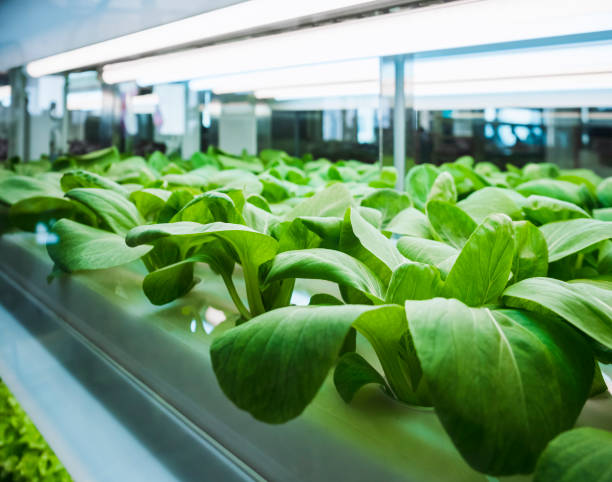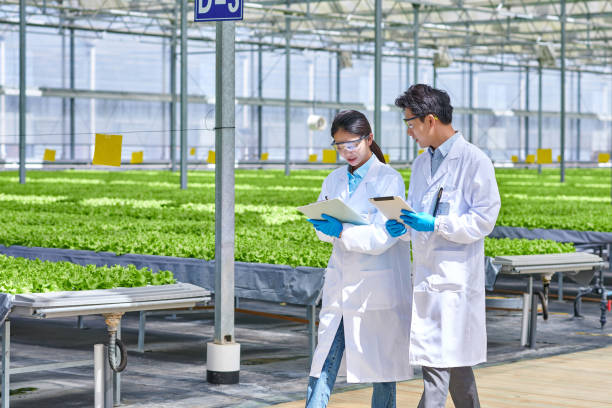Introduction
In reality, where urbanization and restricted outside space have become progressively pervasive, indoor planting has acquired striking prominence. Hydroponic indoor gardens, specifically, have arisen as a progressive answer to the well-established difficulties of conventional soil-based planting. This imaginative plant development technique permits people to build various harvests yearly, paying little heed to the environment or area. This article is about Hydroponic Indoor Gardens.

The Ascent of Hydroponic Indoor Gardens
Hydroponic indoor gardens have seen a flood of interest for many years, and a good reason. This strategy offers many benefits over customary soil-based cultivating, making it an ideal decision for current, space-cognizant, and eco-cognizant groundskeepers.
Efficient Utilization of Room
One of the main benefits of aquaculture indoor planting is its productive space utilization. With customary soil planting, landscapers require more than adequate open-air space and are often compelled by the impediments of soil quality. Aquaculture frameworks, then again, can be set up in little condos, homes, or even on ledges. The upward cultivating idea, which includes stacking different degrees of plants, takes space proficiency to another level, making it conceivable to grow a lot of produce in a smaller region.
Year-Round Development
Hydroponic indoor gardens consider all-year development, liberated from the imperatives of seasons and weather patterns. By controlling fundamental natural variables like temperature, light, and stickiness, nursery workers can cultivate crops ceaselessly. This gives valuable chances to reap new vegetables, spices, and natural products consistently, even during the coldest part of the year.
Water Effectiveness
Conventional cultivation frequently requires significant water use, as much water is lost to soil vanishing or being destroyed. Aqua-farming frameworks, notwithstanding, use water effectively by recycling and reusing it. This preserves moisture and diminishes the risk of overwatering or underwatering, a typical issue in conventional cultivation.
Enhanced Supplement: The Board
In aqua-farming frameworks, plants are provided with precisely estimated supplements, guaranteeing they get the best equilibrium of fundamental components for development. This leads to quicker and more steady growth, bringing about better and more vigorous plants. Nursery workers can change supplement levels to care for the particular requirements of various plants, improving their developing circumstances.

Pest and infectious prevention
Indoor aquaculture gardens are less defenseless against irritations and sicknesses than customary outside parks. Without an openness to exterior components, nursery workers can maintain a controlled climate that limits the risk of invasions and illnesses. This decreases the requirement for synthetic pesticides, making the produce more secure and harmless to the ecosystem.
Aquaculture Methods and Frameworks
There are a few different tank-farming procedures and frameworks, each with unique qualities. The decision of strategy relies upon the producer’s objectives, assets, and level of mastery. Here are a few well-known tank-farming methods:
Deep Water Culture (DWC)
In DWC, plants are suspended in a supplement arrangement, with their underlying foundations lowered into oxygenated water. Air stones or diffusers give oxygen to the root zone. This strategy is known for its straightforwardness and is often picked by novices.
Nutrient Film Strategy (NFT)
NFT includes a slight, persistent film of supplement-rich water that streams over the plant roots, permitting them to ingest supplements and water. This technique is space-effective and appropriate for developing more modest plants like lettuce and spices.
Drip Framework
Trickle frameworks supply supplement answers for plants through an organization of tubers and producers. This method considers exact control of supplement conveyance, making it #1 among experienced tank-farming cultivators.
Aeroponics
Aeroponics is a technique where plants are suspended in a fog or delicate splash of supplement arrangement. This approach amplifies oxygen openness to the roots and can prompt fast development. It’s an inclined strategy for developing sensitive and quickly growing plants like mixed greens.
Ebb and Stream (Flood and Channel)
Rhythmic movement frameworks intermittently flood the plant holders with a supplement arrangement and, afterward, channel it. This rotation in wet and dry circumstances gives oxygen to the roots while conveying supplements. It’s a flexible framework that’s reasonable for many yields.
Final Words
Hydroponic Indoor gardens are reforming how we develop and consume new produce. With its space-effective plan, all-year development potential, water productivity, and exact supplement for executives, tank farming offers many benefits over customary soil-based cultivating. It is an ideal answer for metropolitan tenants, supportability backers, and anybody looking for a plentiful collection inside the bounds of their own home.

Faqs
What is tank-farming indoor cultivating?
Tank farming indoors is a technique for developing plants without soil. Plants are grown in supplement-rich water arrangements, frequently with the backing of a dormant evolving medium like perlite or coconut coir. This technique takes into consideration proficient utilization of room and all-year development.
What are the critical advantages of Hydroponic Indoor gardens?
Aquaculture indoor planting offers various benefits, including space effectiveness, all-year development, water productivity, improved supplementation of the board, and better control over vermin and infections. It empowers you to grow various harvests in a controlled climate.
What do I have to get everything rolling with Hydroponic Indoor gardens?
To begin tank farming indoors, you’ll require fundamental hardware like a developing framework (e.g., profound water culture, supplement film strategy), development lights, a supplement arrangement, pH and EC meters, and suitable plant compartments. Moreover, you’ll have to discover the particular necessities of the plants you expect to develop.
Do I want earlier planting experience to find true success with tank-farming indoor cultivation?
While earlier planting experience can be helpful, it’s anything but a severe necessity to find success with tank-farming indoor cultivation. Numerous amateurs view this technique as available with some exploration and learning. There are various assets, books, and online networks that can give direction to those new to aquaculture.
Can I develop a wide range of plants hydroponically inside?
Most plants can be grown hydroponically inside, yet some are more qualified for this technique. Salad greens, spices, and little fruiting plants like cherry tomatoes are generally filled with aqua-farming frameworks. Root crops like carrots and enormous fruiting plants like watermelons can be difficult, yet they are conceivable with the right arrangement and skill. Examination and information on unambiguous plant necessities are fundamental for fruitful aquaculture development.

